2019 Advanced Studies Institute Program
2019 Projects and Teams
Mentors: Emily S Schultz-Fellenz, Alexandra Jonko, Elizabeth D Miller
Students: Jonathon Fagert, Katherine Flanigan, Moises Silva
The LANL site is located in a fire-prone area, and the 2001 Cerro Grande and 2011 Las Conchas fires are important reminders of the vulnerability of laboratory infrastructure to wildfire. As part of efforts to assess fire risk to infrastructure across LANL, we are looking to develop novel methods to bridge the gap between light detection and ranging (LIDAR) observations of forest canopies and gridded datasets containing fuel information to be used in wildland fire modeling. LANL’s process-based fire behavior model, HIGRAD/FIRETEC, has been used extensively to study fire behavior, including for several wildfire scenarios on lab property. The accuracy with which FIRETEC can currently simulate a fire’s response to heterogeneities in vegetation mass and structure is limited by inputs available to the model. At this time, the model ingest field-measured forest inventory data, including information about tree height, radius, and canopy bulk density. This information is then translated into gridded fuel densities, making some simplifying assumptions about the shape of the tree, and distribution of fuels within it. Trees aren't typically symmetrical, and deviations from these assumptions can bias estimates of fire behavior.
Available LIDAR products can provide high-resolution data, including rich detail about forest canopies, down to individual tree stands' fuel structure. However, the relationship between remotely-sensed quantities and canopy characteristics can be complex, and ongoing efforts to characterize canopy fuels from LIDAR (e.g. data fusion with imagery, regression models, composite metrics and machine learning) all have shortcomings. In addition, very few studies address ecosystems typical of the arid Southwest, including Ponderosa and Pinion-Juniper stands present across the LANL site.
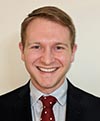 Jonathon Fagert - I am a 3rd year PhD student in the Department of Civil and Environmental Engineering at Carnegie Mellon University. My primary research focus involves footstep-induced structural vibration sensing, where I have explored characteristics of floor vibration wave propagation and human-structure interaction. Prior to my time at CMU, I worked for 6 years in the industry as a Structural Engineer and became a Registered Professional Engineer in the state of New York. My work as a design engineer consisted of structural design of low- to mid-rise buildings in the greater New York City area. After completing my PhD studies, I plan to pursue a career in academia as a faculty member. Outside of my research, I enjoy hiking/camping with my wife and friends, running, reading, and playing sports (baseball/golf).
Jonathon Fagert - I am a 3rd year PhD student in the Department of Civil and Environmental Engineering at Carnegie Mellon University. My primary research focus involves footstep-induced structural vibration sensing, where I have explored characteristics of floor vibration wave propagation and human-structure interaction. Prior to my time at CMU, I worked for 6 years in the industry as a Structural Engineer and became a Registered Professional Engineer in the state of New York. My work as a design engineer consisted of structural design of low- to mid-rise buildings in the greater New York City area. After completing my PhD studies, I plan to pursue a career in academia as a faculty member. Outside of my research, I enjoy hiking/camping with my wife and friends, running, reading, and playing sports (baseball/golf).
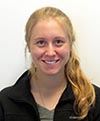 Katherine Flanigan - I am a Ph.D. Candidate in the Department of Civil Engineering’s Intelligent Systems program at University of Michigan, Ann Arbor. I received my Bachelor’s degree in Civil and Environmental Engineering from Princeton University and Master’s degrees in Civil Engineering as well as Electrical and Computer Engineering from University of Michigan. At the heart of my current doctoral research is a desire to maximize the utility of data generated from intelligent infrastructure by optimizing sensing architectures to empower data-driven decision-making for structural health monitoring (SHM). While sensing for SHM has historically been tied to infrastructure, the proliferation of low-cost sensing technologies opens the door to opportunities to embed sensors within cities in new and innovative ways. In light of this, I developed a scalable and accessible urban sensing platform that I am leveraging to better understand interdependent urban processes and pivot my work into the emerging area of smart cities as a research arena. Outside of research I enjoy backpacking in the Sierra Nevada, playing tennis, and learning to play new musical instruments!
Katherine Flanigan - I am a Ph.D. Candidate in the Department of Civil Engineering’s Intelligent Systems program at University of Michigan, Ann Arbor. I received my Bachelor’s degree in Civil and Environmental Engineering from Princeton University and Master’s degrees in Civil Engineering as well as Electrical and Computer Engineering from University of Michigan. At the heart of my current doctoral research is a desire to maximize the utility of data generated from intelligent infrastructure by optimizing sensing architectures to empower data-driven decision-making for structural health monitoring (SHM). While sensing for SHM has historically been tied to infrastructure, the proliferation of low-cost sensing technologies opens the door to opportunities to embed sensors within cities in new and innovative ways. In light of this, I developed a scalable and accessible urban sensing platform that I am leveraging to better understand interdependent urban processes and pivot my work into the emerging area of smart cities as a research arena. Outside of research I enjoy backpacking in the Sierra Nevada, playing tennis, and learning to play new musical instruments!
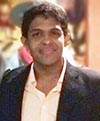 Moises Silva – I am a 24-year-old Brazilian PhD Student. I am currently a visiting student at NSEC, LANL. I received the B.Sc. degree in computer science, 2015, and the M.Sc degree in applied computing, 2017. My background is in computer science with focus on the application of machine learning and artificial intelligence for structural health monitoring and damage identification. At LANL, I am focusing on video-based techniques for structural dynamics monitoring using neuromorphic, event-based silicon retina imagers. During my spare time my hobbies include cubing and watching soccer games.
Moises Silva – I am a 24-year-old Brazilian PhD Student. I am currently a visiting student at NSEC, LANL. I received the B.Sc. degree in computer science, 2015, and the M.Sc degree in applied computing, 2017. My background is in computer science with focus on the application of machine learning and artificial intelligence for structural health monitoring and damage identification. At LANL, I am focusing on video-based techniques for structural dynamics monitoring using neuromorphic, event-based silicon retina imagers. During my spare time my hobbies include cubing and watching soccer games.
Mentor: John Yeager
Students: Morgan Funderburk, Muhammed Zuboraj, Peter Meyerhofer
Plastic-bonded explosives are complex heterogeneous materials that are expected to perform with high precision on-demand. Practical environmental conditions such as humidity, temperature, and storage conditions can lead to degradation in the explosive over time. There is currently no convenient way to monitor age-related degradation in these composites; typically, small samples are removed from the explosive and destructively analyzed. A non-destructive monitoring technique would be greatly beneficial, particularly if it could be applied to multiple types of explosives. An even better solution would be to modify the explosive in some way to make it a "smart material" without affecting its function. Possibilities include introducing an additive which changes color as the material degrades, or a self-healing polymer that generates a new spectral signature when it triggers, or even including small electronic signaling devices within the composite.
 Morgan Funderburk - I am currently PhD student at the University of California San Diego, with a B.S. in Civil Engineering from the University of Alabama. I work to develop cost-effective structural health monitoring systems under the guidance of Dr. Ken Loh. I am passionate about developing engineering systems and techniques that can increase public safety and extend the lifespan of critical infrastructure.
Morgan Funderburk - I am currently PhD student at the University of California San Diego, with a B.S. in Civil Engineering from the University of Alabama. I work to develop cost-effective structural health monitoring systems under the guidance of Dr. Ken Loh. I am passionate about developing engineering systems and techniques that can increase public safety and extend the lifespan of critical infrastructure.
My research utilizes piezoelectric materials to create flow-powered sensors that can detect local scour and provide real-time maps of a riverbed. Local scour, or erosion due to water moving around bridge piers, is the most common cause of bridge collapse in the United States. Strategic use of the proposed sensors can not only increase the working safety of our bridges, but also allow us to anticipate structural damage from extreme events like floods and hurricanes.
Throughout my research career, I have always made engaging in engineering outreach a priority. I have found that engaging and exciting young audiences about engineering has made me more passionate and optimistic about the future of structural engineering and structural health monitoring. In the future, I plan to develop and participate in outreach aimed at inspiring and diversifying the future generations of engineers and researchers.
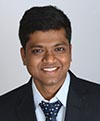 Muhammed Zuboraj – I received the Bachelor of Science degree in electrical and electronic engineering from the Bangladesh University of Engineering and Technology, Dhaka, Bangladesh, in 2011. I also received my MS. and Ph.D. degrees in electrical and computer engineering from the Ohio State University, Columbus, OH, USA in 2015 and 2016, respectively. I joined the Los Alamos National Laboratory as Postdoctoral Research Associate in January, 2017. My current research interests include slow wave structures, high power microwave sources, accelerators and free electron lasers, metamaterials, electromagnetic guided waves, antennas, and microwave circuits.
Muhammed Zuboraj – I received the Bachelor of Science degree in electrical and electronic engineering from the Bangladesh University of Engineering and Technology, Dhaka, Bangladesh, in 2011. I also received my MS. and Ph.D. degrees in electrical and computer engineering from the Ohio State University, Columbus, OH, USA in 2015 and 2016, respectively. I joined the Los Alamos National Laboratory as Postdoctoral Research Associate in January, 2017. My current research interests include slow wave structures, high power microwave sources, accelerators and free electron lasers, metamaterials, electromagnetic guided waves, antennas, and microwave circuits.
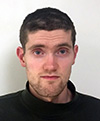 Peter Meyerhofer - I studied mechanical and aerospace engineering in a combined B.S./M.S. program at Case Western Reserve University, earning a B.S. in both subjects in May 2018 and an M.S. just in mechanical engineering in January 2019. My thesis work at NASA Glenn Research Center concerned the development of a cryogenic submarine for Saturn's moon Titan, which I conducted between January 2016 and June 2017, and defended in October 2017. I also developed the thermal modeling of several cryogenic systems while at NASA, the preliminary design of a Mars space station for the aerospace capstone at Case Western, and a vibration test of 3d-printed parts at the Los Alamos Dynamics Summer School in 2018. In my spare time, I do hiking and martial arts.
Peter Meyerhofer - I studied mechanical and aerospace engineering in a combined B.S./M.S. program at Case Western Reserve University, earning a B.S. in both subjects in May 2018 and an M.S. just in mechanical engineering in January 2019. My thesis work at NASA Glenn Research Center concerned the development of a cryogenic submarine for Saturn's moon Titan, which I conducted between January 2016 and June 2017, and defended in October 2017. I also developed the thermal modeling of several cryogenic systems while at NASA, the preliminary design of a Mars space station for the aerospace capstone at Case Western, and a vibration test of 3d-printed parts at the Los Alamos Dynamics Summer School in 2018. In my spare time, I do hiking and martial arts.
Mentors: Juston Moore, Garrett Kenyon
Students: Miltiadis Kennas, Sebastian Zanlongo, John Morales
Today, all kinds of sensor data are easier to spoof than ever before. Realistic images, audio, and video can be synthesized efficiently by machine learning algorithms, which learn their realism directly from data. It is only a matter of time until these generative algorithms are deployed by adversaries in a wide range of sensing domains. To prepare for this shifting reality, we need to measure the detectability of fake data in domains of critical importance to the Los Alamos mission. In this project, you will be presented with real radiological data from a variety of sensors, along with fake data synthesized by a computer program. Your task will be to detect the synthetic data, and additionally to fingerprint individual sensors to enable device-level assurance.
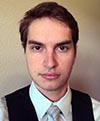 Miltiadis Kennas - I am a PhD. Candidate in the Department of Nuclear Engineering at Texas A&M University, where I work as a Graduate Research Assistant for the Texas A&M Radiation Material Science Laboratory and Characterization Facility. Our research focus is the simulation of radiation damage on materials using ion accelerators. My thesis work is on developing accident tolerant nuclear fuel cladding through coating.
Miltiadis Kennas - I am a PhD. Candidate in the Department of Nuclear Engineering at Texas A&M University, where I work as a Graduate Research Assistant for the Texas A&M Radiation Material Science Laboratory and Characterization Facility. Our research focus is the simulation of radiation damage on materials using ion accelerators. My thesis work is on developing accident tolerant nuclear fuel cladding through coating.
Outside of the lab, I love to spend time with my car friends while we modify and repair each other’s unique vehicles. During my undergraduate and early graduate years, I competed in the Texas A&M Target Archery Team, currently 20-time national collegiate champions.
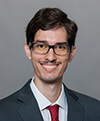 Sebastian Zanlongo - I earned my Ph.D. in Computer Science from Florida International University (FIU) in 2018. My research interests focus on robotics for nuclear Deactivation & Decommissioning (D&D), and multi-robot control. As a Department of Energy fellow, I have collaborated with Los Alamos and Sandia to develop human-inspired strategies for robots. I am currently working with the FIU Applied Research Center and Savannah River National Laboratories to develop a robotic platform for D&D inspection efforts.
Sebastian Zanlongo - I earned my Ph.D. in Computer Science from Florida International University (FIU) in 2018. My research interests focus on robotics for nuclear Deactivation & Decommissioning (D&D), and multi-robot control. As a Department of Energy fellow, I have collaborated with Los Alamos and Sandia to develop human-inspired strategies for robots. I am currently working with the FIU Applied Research Center and Savannah River National Laboratories to develop a robotic platform for D&D inspection efforts.
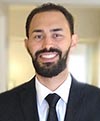 John Morales – I was born in Fajardo, Puerto Rico, in 1987. I received the B.S in Computational Mathematics from the University of Puerto Rico, Humacao, PR, in 2010 and the M.S degree in Computer Science from Polytechnic University of Puerto Rico, San Juan, PR, in 2018.
John Morales – I was born in Fajardo, Puerto Rico, in 1987. I received the B.S in Computational Mathematics from the University of Puerto Rico, Humacao, PR, in 2010 and the M.S degree in Computer Science from Polytechnic University of Puerto Rico, San Juan, PR, in 2018.
From 2011 to 2017, I worked as a programmer in the healthcare sector developing and maintaining Electronic Health Record (EHR) systems. In summer and winter of 2017, I worked on LANL AR projects related to infrastructure and embedded systems. I am currently a post-master at LANL developing augmented reality projects and interfaces between embedded systems and cellphones. Most recently, I have been working on AR interfaces for Smart Nuclear Infrastructure, Cellphone interface for Universal Bacteria Sensor, AR training for IED disruption, AR UAV and Reactor Locator and AR Framework for trusted third party verification. My research interests include developing Augmented Reality applications for enhancing human work and performance, Image processing, Deep Learning for Cyber Security and Blockchain for data integrity.
Mentors: Harshini Mukundan, Bridget Martinez, Loreen Rose Stromberg, Nick Hengartner
Students: Parinaz Fathi, Tabitha Miller, Amanda Tan
Rates of global migration continue to grow, reaching 278 million persons worldwide in 2017. World-wide travel for both work and recreational purposes (e.g. immigrants, seasonal workers, asylum seekers, international students) has become increasingly easy and common. As a result, the impacts caused by population mobility on human health are of increasing concern. In addition, there are also concerns that climate change can potentially lead to the emergence of diseases in locations they were previously not found. In light of these developments, there is a need to create stand-off, non-contact, non-invasive measurement techniques that can be used to rapidly triage large numbers of individuals during disasters, unprecedented scenarios and humanitarian crises, with high accuracy. Errors made during the triage stage of an emergency/humanitarian response have a number of consequences and can result in delays in providing appropriate care, leading to deterioration of health or untimely death. In some cases medical care is not administered at all, or incorrect care is rendered. False-negatives during triage can lead to exposing larger populations to infectious diseases. Quality of triage is also important from an ethical stance. If triage is performed in a low-quality manner that is no defendable, the result can be loss in confidence in the U.S. government which can lead to political consequences. This concern is particularly acute when addressing populations whose culture is significantly different from that found in western countries. Thus, there is a need for effective, sensitive, rapid technologies that can be used for triage during emerging infectious diseases. Such an effort also needs to be coupled with an understanding of the statistical bounds within which effective identification can minimize downstream consequences. The successful development of a technology for remote, stand-off, rapid triage would help mitigate the concerns associated with the spread of disease both during humanitarian as well as emergency response.
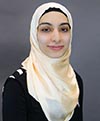 Parinaz Fathi – I received my B.S. in Mechanical Engineering from the University of Maryland in 2015, and my M.S. in Bioengineering from the University of Illinois in 2017. I am currently pursuing a PhD in Bioengineering at University of Illinois, working under the guidance of Professor Dipanjan Pan (UIUC) and Dr. Mandy Esch (NIST). My research interests lie in biomaterials, nanomaterials, and microfluidics, and my current research focuses on developing novel theranostic nanoparticles and organ-on-a-chip models. Outside of research, I enjoy volunteering, calligraphy, and reading.
Parinaz Fathi – I received my B.S. in Mechanical Engineering from the University of Maryland in 2015, and my M.S. in Bioengineering from the University of Illinois in 2017. I am currently pursuing a PhD in Bioengineering at University of Illinois, working under the guidance of Professor Dipanjan Pan (UIUC) and Dr. Mandy Esch (NIST). My research interests lie in biomaterials, nanomaterials, and microfluidics, and my current research focuses on developing novel theranostic nanoparticles and organ-on-a-chip models. Outside of research, I enjoy volunteering, calligraphy, and reading.
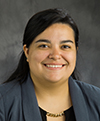 Tabitha Miller - I earned my B.S. in Chemistry from Massachusetts Institute of Technology in 2015. Currently, I’m a 4th year Ph.D. student studying inorganic chemistry at the University of Illinois at Urbana-Champaign. My work focuses on the use of bio-inspired non-heme iron complexes to study various important reactions in the global nitrogen cycle. I am also working on the synthesis of early metal complexes to study oxygen atom transfer reactions relevant to biological reduction processes. In my free time, I enjoy baking, playing trivia, and spending time with my dog, Oakley.
Tabitha Miller - I earned my B.S. in Chemistry from Massachusetts Institute of Technology in 2015. Currently, I’m a 4th year Ph.D. student studying inorganic chemistry at the University of Illinois at Urbana-Champaign. My work focuses on the use of bio-inspired non-heme iron complexes to study various important reactions in the global nitrogen cycle. I am also working on the synthesis of early metal complexes to study oxygen atom transfer reactions relevant to biological reduction processes. In my free time, I enjoy baking, playing trivia, and spending time with my dog, Oakley.
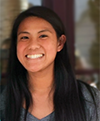 Amanda Tan - I am a graduate student in Physics at the University of California, Merced. The research group I work in focuses on studying soft matter materials. I am currently studying transport properties of an active network that self-assembles from biopolymers and molecular motors. Outside of research, I enjoy running, hiking, and being outdoors.
Amanda Tan - I am a graduate student in Physics at the University of California, Merced. The research group I work in focuses on studying soft matter materials. I am currently studying transport properties of an active network that self-assembles from biopolymers and molecular motors. Outside of research, I enjoy running, hiking, and being outdoors.Signature Presentations
- Michelle DeCroix – An Introduction to the Science of Signatures
- John Yeager – Explosives Research at LANL
- Harshini Mukundan – Developing Point of Care Diagnostic Platforms: Biological and Engineering Considerations
- Michael Todd – How to Get Tenure at a University
- Alexandra Jonko – Converting LIDAR and Imagery Data to Information about Vegetation Structure
- Philippe Gueguen – Seismic Structural Health Monitoring at ISTerre: New Insights from Permanent Building Array and Laboratory Experiments
- Ariana Astorga – Short and Long-term Recovery of the Fundamental Frequency in Buildings as a Proxy of Structural State
- David Mascarenas – R&D Project Management
- Geoffrey Fairchild – Heterogeneous Data Fusion to Improve Disease Forecasting
- Kaelyn Badura & Kathleen McDonald – Tech Transfer and Intellectual Property
- Sara Brambilla – Colloid Particle Resuspension in Air: Gaps and New Findings
- David Clark – How to Write Proposals
- Alexandria Marchi – Plutonium Density Characterization
- David Mascarenas – Video Based Structural Dynamics
- Troy Harden – Augmented Reality for Smart Nuclear Infrastructure
- Mike Bowden – Optical Initiation Technologies
- Charles Farrar – Summary of Structural Health Monitoring



